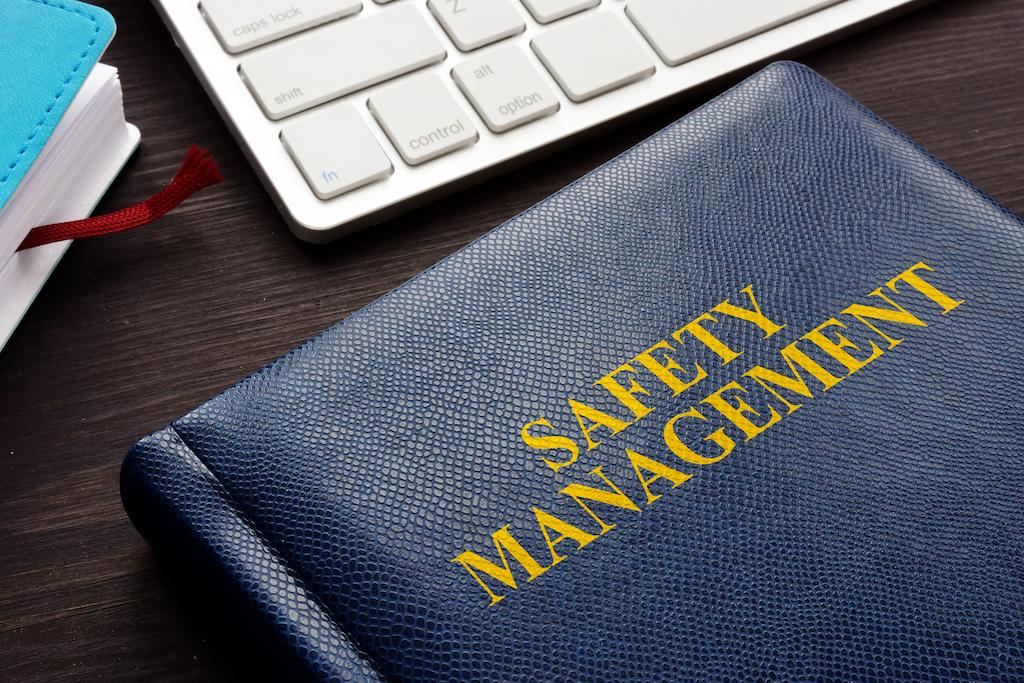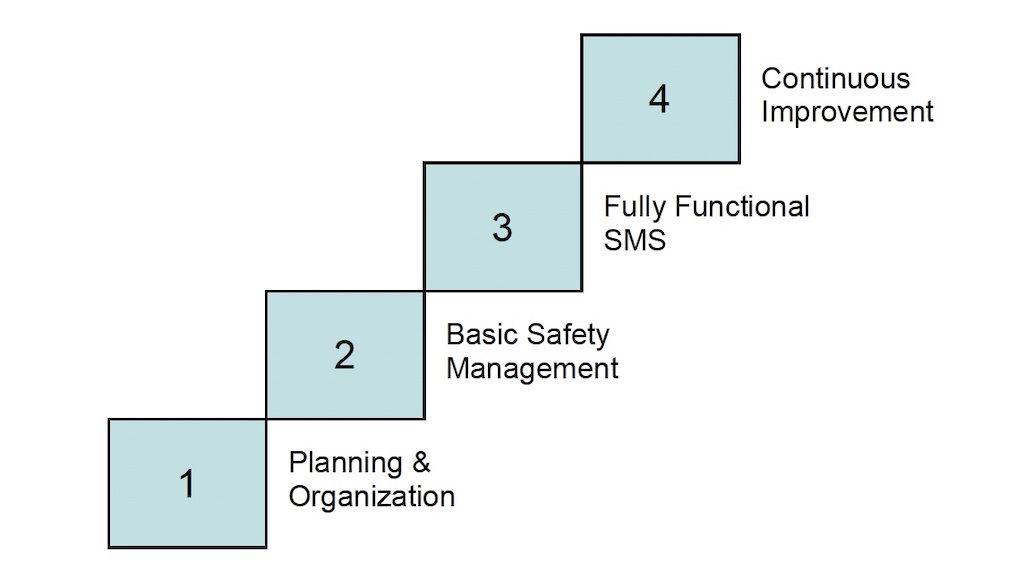
You might have heard that achieving an industry-compliant Safety Management System (SMS) program is simply a matter of finding a vendor, writing a check and placing a new binder on your safety officer’s desk. You can find someone who will accept your check and produce just such a binder, but that will not, by itself, get you an SMS program that will do you any good.
The key idea when adopting an SMS is that it isn’t something you add to your library of company policies and procedures—it is something that is integrated into your existing programs and ties everything together. If this makes it seem like adopting an SMS will be a lot of work, that is because it is. While the process should take many years, each step along the way is manageable. The process never really ends, but you will see benefits almost immediately and as your system matures, the benefits will increase.
The first step is to get everyone’s “buy in” and that step begins with senior leaders. Why, they might ask, do we need to adopt this when we’ve gotten along just fine without it? For most of us, the answer will be: it is required. But that isn’t universally true.
If you are a U.S. commercial operator, you must have an SMS program. The regulatory requirement is in 14 CFR 5.1(a), which says, “A certificate holder under Part 119 of this chapter authorized to conduct operations in accordance with the requirements of Part 121 of this chapter must have a Safety Management System that meets the requirements of this part and is acceptable to the Administrator by March 9, 2018.” Part 119 defines certificate holders as air carriers and commercial operators under 121, 125 and 135.
If you are flying under non-commercial rules, Part 91, and fly internationally, the International Civil Aviation Organization (ICAO) Doc 9859, paragraph 8.4.7 says, “In accordance with Annex 19, the State shall require that service providers and international general aviation operators implement SMS.”
In the U.S., that leaves a lone exception to the SMS requirement: domestic-only Part 91 operators. If you fall into this category, an SMS program is voluntary but can be economically beneficial. My Part 91 flight department receives a 15% annual discount on our insurance, more than offsetting any costs associated with our SMS program.
Once you have leadership behind you, the next step is to get everyone in the organization on board. It will be helpful to have at least one person trained to speak the SMS language and ready to show the way with your next chance to improve your operation. Most organizations hand this over to their safety officer, but I think it is important to realize that in a robust SMS, everyone is a safety officer. The person with the title helps train others, but in the end, it takes everyone to inculcate a good safety culture.
Key Parts Of An SMS

The key to understanding SMS is realizing that it is a decision-making system designed to change the way you operate. It is built around four components: safety policy, safety risk management, safety assurance and safety promotion. You will need the four components to reap all the benefits of a robust SMS program.
A safety policy is where the organization sets its standard operating procedures (SOPs) and management conveys its commitment to the safety program. This is typically done with a flight operations manual or other written document easily accessed by members of the organization. If you don’t have such a document, you can start with the SOPs in your aircraft manual and a letter from the company that basically says you will follow those, and the company will employ a policy that encourages all members to report any safety issues. A key component of this letter is the executive’s support of a confidential employee reporting system to report all hazards, accidents, incidents and safety issues without fear of reprisal.
A safety risk management program provides a mechanism for people to report potential problems and for the organization to mitigate those problems in a collaborative process. It can be as simple as a blank form or an email to the safety officer, followed by one or more people coming up with a fix.
Safety assurance is a way to monitor and measure how things are going, including those things that have been addressed by the safety risk management program. In short, it answers the question, “did our fixes work?”
Safety promotion lets everyone know that they are a part of the SMS, the organization’s safety priority, reporting procedures and how risks are mitigated. It should involve regular training and participation.
You already may have most of the basic components of a functioning SMS in place or you may be starting from square one. Back in 2008, I was convinced we could bring ourselves up to whatever SMS requirements were needed to fly internationally and only pay for our audits to document our SMS status. This method helped us to really understand the nuts and bolts of our SMS, but it was a lot of work and took too much time.
The easiest way to spool up your SMS program is to hire a company specializing in getting you up to speed quickly, or you can do it on your own, as we explain in Part 3 of this article.
The SMS Journey, Part 1: https://aviationweek.com/business-aviation/safety-ops-regulation/sms-jo…





